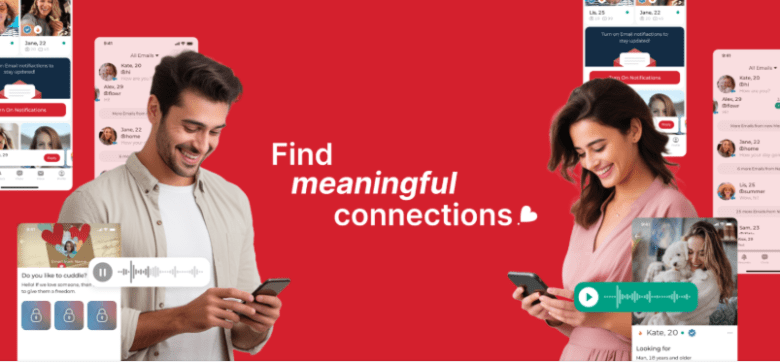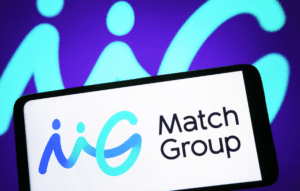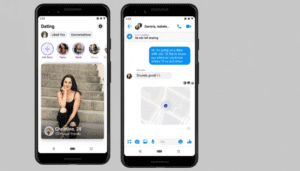How to Start a Dating App Startup in 2025: Swipe Right on Costs, AI, Revenue Models & Platform Success
In 2025, the digital landscape for dating apps has matured, yet it continues to boom. The online dating industry has grown from a niche digital service to a $12+ billion sector, led by platforms like Tinder, Bumble, Hinge, and Badoo. But the space is far from saturated. With evolving AI, personalized user experience, and innovative revenue models, the opportunity for launching a successful dating app startup is bigger than ever.
Whether you’re a founder looking to build a dating app, a developer exploring app development cost, or an investor analyzing dating app revenue, this guide will give you 7 key insights to help you understand the real mechanics behind dating platforms in 2025 — and how you can break in and dominate.
1. The Online Dating App Industry in 2025: Why Startups Still Thrive
The online dating space has entered a new golden age in 2025, with over 450 million monthly active users across apps worldwide. What was once dominated by a few giants is now a landscape filled with micro-niche dating services, voice-first experiences, and AI-based matchmaking tools.
The annual growth rate of the dating app industry hovers around 7.2%, driven by:
- Mobile-first experiences optimized for both iOS and Android
- A growing number of serious relationships originating from apps
- Real-world shifts in how people use dating tools post-pandemic
- Changing demographics and preferences for personalization
These trends make launching a dating platform a high-opportunity move — if done right.
Explosive Growth in Dating App Users and Services
The rise of feature-rich platforms and in-app innovation has expanded what users expect from a dating experience. No longer satisfied with just a swipe right, users demand advanced features like:
- AI matching based on behavior and compatibility
- Video dating and real-time messaging
- Local event integrations
- Personalization of profiles, feeds, and notifications
This shift opens the door for startups to craft a differentiated product — especially if they can identify and serve a hyper-specific user base.
Why Now Is Still a Good Time to Start a Dating App Startup
You might wonder if it’s too late to enter the market. The truth is, people are increasingly turning to dating apps over traditional dating sites, especially younger generations.
The match group of companies (Tinder, Hinge, OkCupid) may lead the way, but they also signal what works. Smaller apps like Kippo (for gamers) or Muzmatch (for Muslims) show that well-executed niche dating platforms can still gain massive traction.
2. Startup Costs: How Much Does It Cost to Build a Dating App in 2025?
Let’s answer the critical question: how much does it cost to build a dating app today?
In short, the total cost depends on your vision. A basic MVP can run you around $25,000–$60,000, while a feature-rich platform can exceed $250,000 or more.
MVP vs Full Product: Dating App Development Cost Ranges
Here’s a quick cost breakdown:
| Feature | Estimated Cost |
| Minimum Viable Product (MVP) | $25,000–$60,000 |
| Core app development (iOS/Android) | $30,000–$80,000 |
| UI/UX for a great user experience | $5,000–$15,000 |
| Backend + API platform development | $10,000–$40,000 |
| AI features (AI matching) | $20,000–$40,000 |
| In-app features (gifting, boosts) | $5,000–$15,000 |
| Ongoing maintenance costs | 15–20% of the total annually |
Outsourcing to Reduce Costs Without Sacrificing Quality
You can significantly reduce costs by choosing to outsource to development teams in Eastern Europe, India, or Southeast Asia — regions known for quality app development at affordable prices.
Outsourcing your dating app development lets you focus on marketing and product-market fit while keeping your initial development cost annually manageable.
3. Monetization Mastery: The Most Profitable Revenue Models for Dating Apps
Monetizing a dating app is no longer just about throwing up ads. The most successful platforms — like Tinder and Bumble — use layered revenue streams to diversify income and scale efficiently.
A. Freemium + Subscription Tiers
Most dating platforms adopt a freemium model where free users get access to the basics (profile, search, messaging), while premium features are locked behind subscription tiers.
For example:
- Tinder Gold, Tinder Platinum
- Bumble Boost, Bumble Premium
- Hinge Preferred
These drive a high average revenue per user (ARPU), often exceeding $20/month.
B. In-App Purchases & Microtransactions
Short-term in-app purchases — like Boosts, Super Likes, or virtual gifts — offer an easy upsell, especially for users unwilling to commit to a full subscription.
These microtransactions make your dating app revenue less dependent on long-term churn and appeal to a broader user base.
C. Ads, Affiliate, and Innovative Revenue Models
Beyond subscriptions and purchases, many apps explore:
- In-app advertising for free users
- Affiliate marketing (date night deals, restaurants)
- Real-world events with paid tickets or brand sponsors
- VIP memberships with human matchmakers
These innovative revenue models not only diversify income but also improve profitability across different audience segments.
4. AI Is No Longer Optional—It’s the Core of Modern Dating App Development
AI is redefining how dating apps match, retain, and understand their users. If you’re building in 2025, you must integrate AI-based features from day one.
Key implementations include:
- AI matching: Using behavioral data and interaction patterns to pair users more effectively
- Personalization: Dynamic suggestions based on user behavior and preferences
- Content moderation & fraud detection
These tools boost user experience, help keep users coming back, and increase the value of premium features — all while supporting better scalable growth.
5. MVP vs Feature-Rich Platform: What Should You Launch First?
Launching a minimum viable product lets you start a dating app with core functionality and low startup costs.
A good basic MVP should include:
- Profile creation
- Matching & search
- Chat & real-time messaging
- Swipe-based interface
Once you gather user feedback, you can build your way up to a feature-rich platform with:
- AI-powered matchmaking
- Video calls
- Profile boosts
- Local events or experiences
Scaling wisely protects your push costs and allows for faster pivots.
6. Don’t Forget the Post-Launch Phase: Maintenance & User Retention
Even the best-designed mobile app can fail if post-launch is neglected.
Your real expenses begin with:
- Ongoing maintenance costs
- Feature updates and A/B testing
- Bug fixes
- User support and community building
This ensures your active users stay engaged. A good post-launch plan should budget at least 15–20% of the final cost annually.
Also, retention metrics like monthly active users (MAU) and daily active users (DAU) are critical in attracting investors — especially in a competitive online dating landscape.
7. Success Stories: How Tinder, Bumble & Others Built Loyal User Bases
Tinder revolutionized the market with the swipe right feature — a mechanic that’s now standard across apps like Hinge, Bumble, and even Badoo.
Hinge focused on fostering meaningful connections and appealed to people looking for serious relationships. Bumbleflipped the script with women making the first move.
What can you learn from these?
- Start with a unique positioning
- Understand your demographics
- Prioritize user experience
- Test and iterate constantly
These brands succeeded by aligning product development with brand mission and user behavior.
Final Thoughts: Is Launching a Dating App Startup in 2025 Still a Good Idea?
Without a doubt.
Despite fierce competition, the dating app industry continues to offer room for startups that innovate — particularly in niche dating services, user targeting, and AI-based functionality.
With solid planning, a sharp MVP, smart platform development, and a clear cost breakdown, you can launch a profitable and scalable dating app in 2025.



